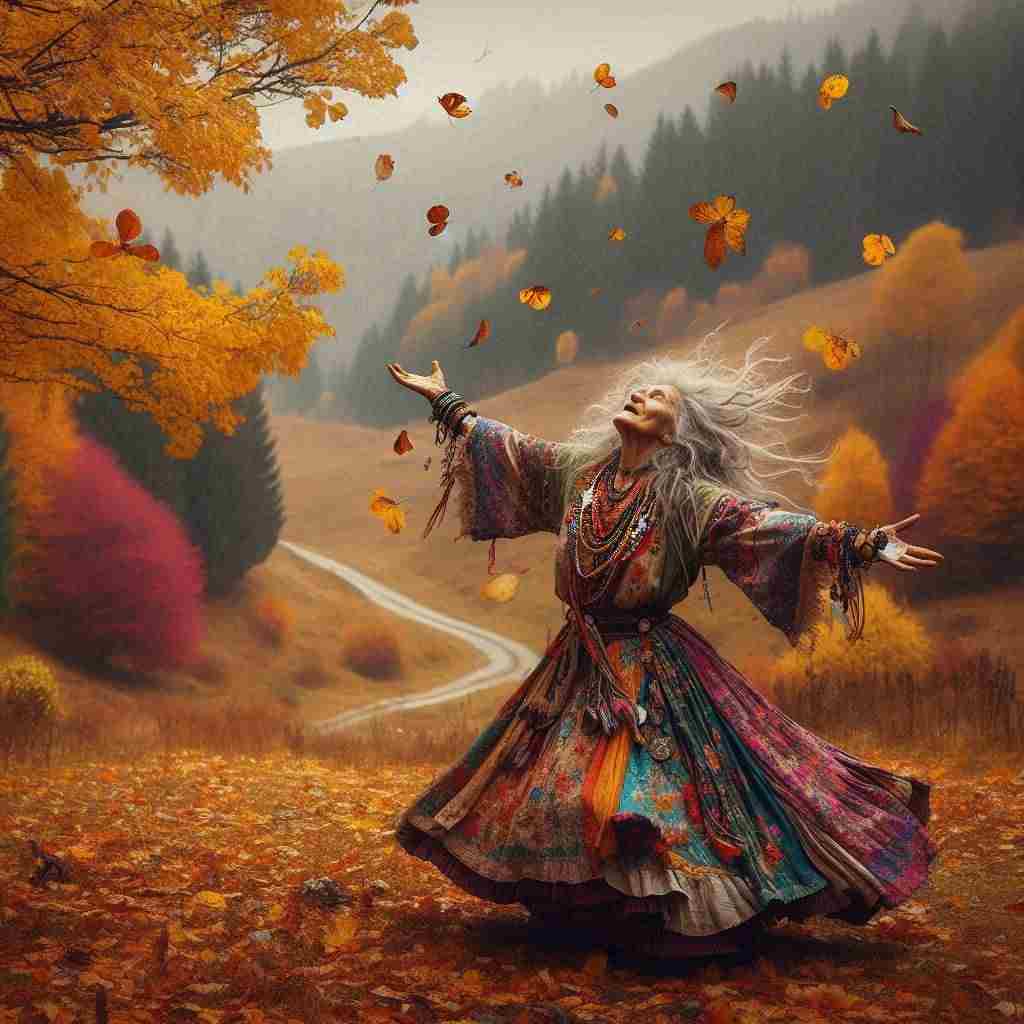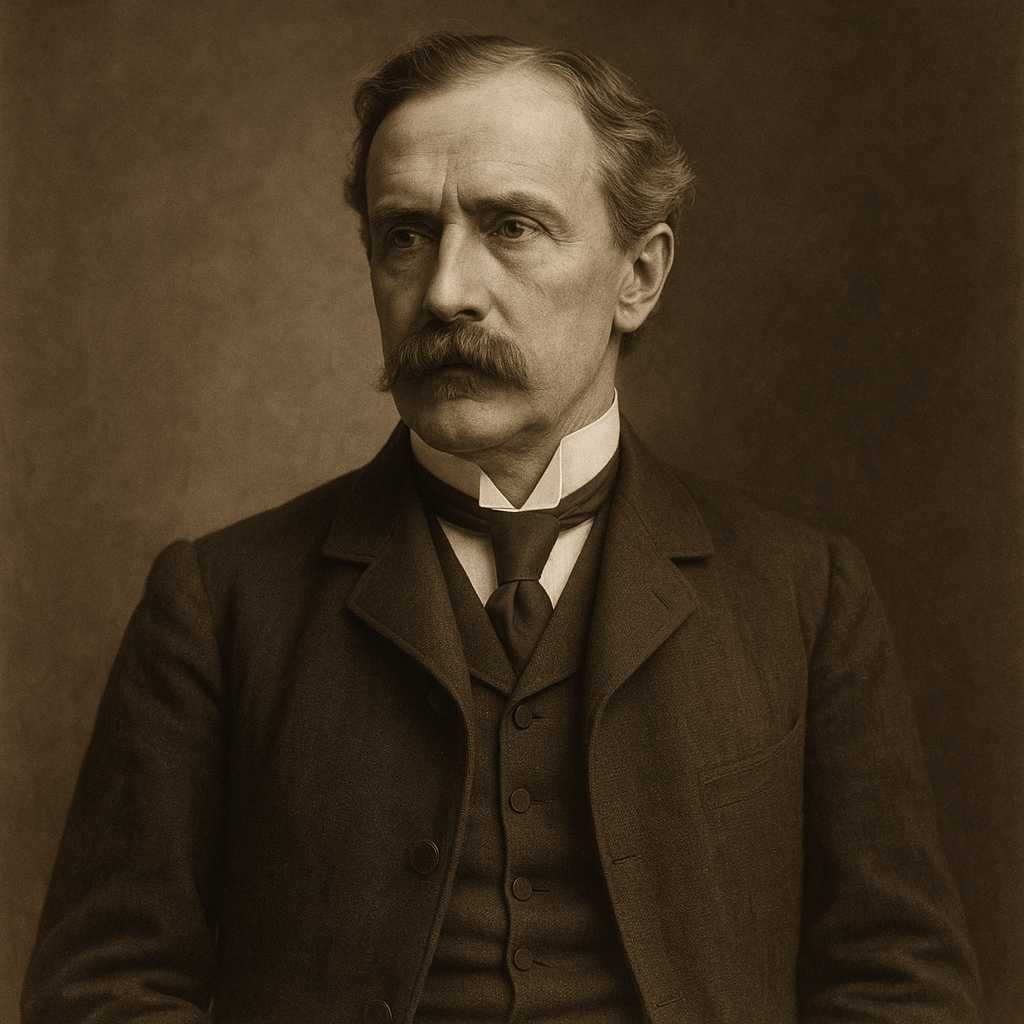A Vagabond Song
Bliss Carman
1861 to 1929

There is something in the autumn that is native to my blood—
Touch of manner, hint of mood;
And my heart is like a rhyme,
With the yellow and the purple and the crimson keeping time.
The scarlet of the maples can shake me like a cry
Of bugles going by.
And my lonely spirit thrills
To see the frosty asters like a smoke upon the hills.
There is something in October sets the gypsy blood astir;
We must rise and follow her,
When from every hill of flame
She calls and calls each vagabond by name.
Bliss Carman's A Vagabond Song
Introduction
Bliss Carman's "A Vagabond Song" stands as a quintessential example of late 19th-century nature poetry, blending Romantic sensibilities with the emerging modernist ethos of its time. This twelve-line poem, published in 1894, captures the essence of autumn's transformative power and its profound effect on the human spirit. Through a masterful use of imagery, sound, and rhythm, Carman creates a vivid tapestry that interweaves the natural world with the inner landscape of the poetic persona. This analysis will delve into the poem's thematic richness, its structural intricacies, and its place within the broader context of Carman's oeuvre and the literary movements of his era.
Thematic Analysis
At its core, "A Vagabond Song" explores the intimate connection between nature and the human psyche. The poem posits a deep, almost primal relationship between the speaker and the autumnal world, suggesting that the changing seasons have the power to awaken dormant aspects of one's identity. This theme is introduced in the opening lines: "There is something in the autumn that is native to my blood— / Touch of manner, hint of mood". The use of the word "native" implies an innate, perhaps even genetic, link between the speaker and the season, while the "touch" and "hint" suggest a subtle yet profound influence.
The poem then develops this theme through a series of vivid autumnal images, each evoking a strong emotional response in the speaker. The "yellow and the purple and the crimson" of changing leaves are not merely visual phenomena but keep time with the speaker's heart, suggesting a synchronicity between natural cycles and human emotions. This synchronicity reaches its peak with the powerful simile comparing the "scarlet of the maples" to "a cry / Of bugles going by", evoking both visual and auditory sensations that "shake" the speaker to their core.
The final stanza introduces the concept of the "gypsy blood", a romanticized notion of wanderlust and freedom associated with the Romani people. This metaphor serves to universalize the experience, suggesting that autumn's call to wander is not unique to the speaker but is a shared human impulse. The personification of October as a female figure who "calls and calls each vagabond by name" further reinforces the idea of nature as an active, alluring force that compels human action.
Structural and Stylistic Analysis
Carman's poem is a masterclass in the use of form to reinforce content. The poem consists of three quatrains, each with a distinct rhythmic pattern that mirrors the thematic progression. The first quatrain establishes a relatively steady rhythm, with alternating lines of roughly 14 and 8 syllables. This regularity is briefly interrupted by the third line, "And my heart is like a rhyme", which stands out both metrically and thematically as a moment of self-reflection.
The second quatrain introduces a more dramatic variation in line length, with the short line "Of bugles going by" creating a pause that emphasizes the power of the image. This stanza also features the most striking use of alliteration in the poem, with "spirit thrills" and "frosty... smoke" creating a sonic texture that complements the visual imagery.
The final quatrain returns to a more regular rhythm, but with a sense of urgency conveyed through the repetition of "calls and calls" and the use of the imperative "We must rise and follow her". This structural progression from regularity to variation and back to regularity (but with a new energy) mirrors the thematic journey from passive observation to active response.
Carman's use of rhyme is particularly noteworthy. The poem follows an ABCB rhyme scheme in each quatrain, but with a twist: the B rhymes carry over from one stanza to the next ("mood/blood", "by/cry", "her/astir"). This creates a subtle link between the stanzas, reinforcing the idea of continuity and cyclical change that is central to the poem's theme.
Imagery and Symbolism
The imagery in "A Vagabond Song" is rich and multifaceted, drawing on both visual and non-visual sensory experiences. The colors of autumn—yellow, purple, crimson, and scarlet—dominate the visual palette, creating a vibrant backdrop for the poem's emotional journey. These colors are not static but active, "keeping time" and able to "shake" the speaker, imbuing them with an almost supernatural power.
The comparison of the maple's scarlet to "a cry / Of bugles going by" is particularly potent, synesthetically combining color, sound, and motion. This image evokes connotations of military calls or hunting horns, suggesting that autumn serves as a call to action or adventure.
The "frosty asters like a smoke upon the hills" present a more subtle image, introducing a cooler tone that contrasts with the warm colors of the changing leaves. The comparison to smoke suggests ephemerality and transformation, themes that resonate with the overall concept of seasonal change and personal awakening.
The personification of October as a female figure who calls to "each vagabond by name" draws on a long tradition of depicting nature as a feminine entity. This personification serves multiple purposes: it humanizes the abstract concept of a month, creates a sense of intimate knowledge between nature and humanity, and sets up a dynamic of call and response that drives the poem's conclusion.
Literary and Historical Context
"A Vagabond Song" emerges from a rich tradition of nature poetry that includes the Romantic poets of the early 19th century and the Transcendentalists of mid-century America. Carman's work bridges these earlier movements with the approaching modernist aesthetic, retaining the Romantic emphasis on emotional responses to nature while introducing a more direct, less ornate style that anticipates 20th-century developments.
The poem's celebration of wanderlust and its romanticization of the "gypsy" lifestyle reflect late 19th-century cultural attitudes, including a growing disillusionment with industrialization and urban life. This theme resonates with contemporaneous works like Walt Whitman's "Song of the Open Road" and anticipates the "back to nature" movements of the early 20th century.
Carman's own biography provides context for the poem's themes. Born in New Brunswick, Canada, Carman spent much of his life traveling between Canada, the United States, and Europe. His experiences as a "vagabond" poet likely informed the sense of restlessness and connection to nature expressed in this poem.
Conclusion
"A Vagabond Song" stands as a testament to Bliss Carman's poetic skill and his deep engagement with the natural world. Through its deft use of imagery, sound, and structure, the poem creates a powerful evocation of autumn's transformative potential. More than a simple nature poem, it explores the complex relationship between external landscapes and internal emotional states, suggesting that the changing seasons have the power to awaken hidden aspects of the human spirit.
The poem's enduring appeal lies in its ability to capture a universal experience—the stirring of restlessness and desire for change that often accompanies the arrival of autumn—in highly specific and evocative language. By personifying October and framing the response to autumn as a kind of vagabondage, Carman elevates a common experience into a romantic adventure.
In the broader context of late 19th-century poetry, "A Vagabond Song" represents a pivotal moment in the evolution of nature poetry. It retains the Romantic reverence for nature's beauty and power while moving towards a more direct, personal mode of expression that would characterize much of 20th-century poetry.
Ultimately, Carman's poem invites readers to recognize the "something in the autumn that is native to my blood"—to acknowledge and embrace the deep, perhaps unconscious connections between human nature and the natural world. In doing so, it continues to resonate with readers more than a century after its composition, reminding us of the enduring power of the seasons to shape our emotional and spiritual lives.
This text was generated by AI and is for reference only. Learn more
Want to join the discussion? Reopen or create a unique username to comment. No personal details required!



Comments
No comments yet. Be the first to comment!